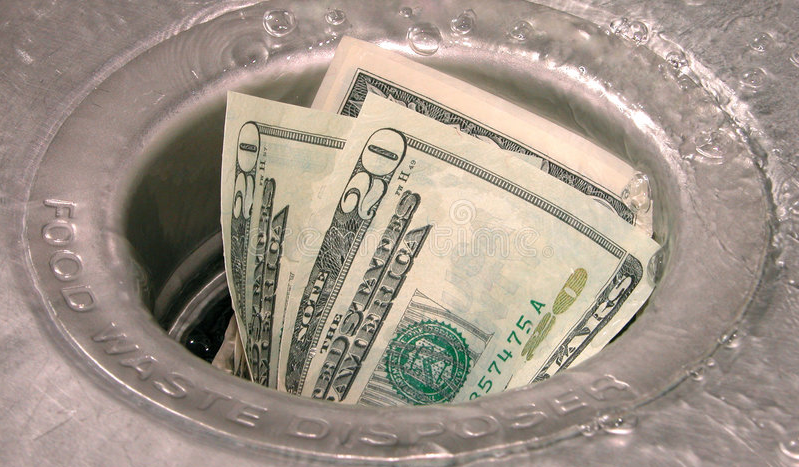This is one of the biggest debates in the HVAC world. Similar to which brand of truck is the best, should you always run the football on 4th and 1, which came first “the chicken or the egg,” is a hot dog a sandwich, and many other fun debates with differing viewpoints. The two thermostat settings are pretty self-explanatory as to what they mean but let’s break down the pros and cons of each.
“ON” Fan Setting
When you select the “ON” setting for the system’s fan from your thermostat, it will constantly run. It doesn’t matter if the A/C or furnace is actively running or not, the fan will continue to run. There are a few benefits one can get from their fan running 24/7.
- Since the fan is running all the time this means more filtration as your return is constantly pulling in air and particles are getting captured by your filter.
- A continuous fan means continuous flow of air throughout the duct system which can alleviate the discomfort of hot and cold rooms. More air is constantly being pushed to all the rooms so there is a more even distribution.
- Some believe this can increase equipment life since the fan has a reduced need for starting and stopping as the system cycles.
There are also many cons to having the fan put to the “ON” setting.

- Running your fan non-stop will be more costly than if it were set to “AUTO.” The difference will vary depending on how you set and use your thermostat but this could be a difference of $40-$50 a month or $480-$600 a year.
- The fan isn’t cycling conditioned air while the heating or cooling system isn’t running. Depending on the time of year, this might make your system work harder. For instance, during the summer your attic gets hot and if you have ductwork up there, you could be cycling warm air back into your home until the A/C kicks back on to negate it.
- A home with the fan always on will work harder to dehumidify the home properly. Any remaining moisture that built up on the cooling coils after the cooling cycle has ended will be blown back into the home and continuously recirculated. So if you have humidity issues then leaving your fan in the “ON” position will not be in your best interest.
- More circulation also means more particles passing through your filter which means you’ll need to change your filter more frequently.
- A fan that is always running in the “ON” position could significantly decrease your IAQ when combined with leaky ductwork, pulling in and recirculating allergens, dust, dirt, insulation fibers, etc. from places like wall cavities, attics, and crawlspaces. Why pay more for filters to be filtering air from areas of your home that aren’t used?
- A fan that is always on may also put you at a greater risk of developing or increasing the amount of duct leakage in your home since the constant pressure adds additional stress to your current leaks and can make them bigger. Like a constant stream of water carving out the soil. Duct leakage is a major culprit in a system not functioning properly and adding higher than expected utility bills so limiting or removing as much duct leakage as possible should be a main homeowner concern.
- Leaky ductwork also changes the pressure of your home and can increase the chances of backdrafting from combustible appliances (gas stove, furnace, water heater, etc.). Running the fan constantly will increase these pressures and increase the likelihood of backdrafting which isn’t good for IAQ. This is why Carbon Monoxide monitors are so important.
“AUTO” Fan Setting
When you select the “AUTO” setting for the systems fan from your thermostat, it will only run when the cooling or heating system is actually running. Aside from the substantial difference in operating time that can save you big, there are other benefits that might not seem so obvious.
- Your unit will properly dehumidify since the fan is only running when the system is. This is one of the main, and often times overlooked, functions of your A/C. Since the fan stops, any moisture remaining on the coil will be drained to the outside which will lower humidity levels.
- Since the fan is only running when the system is actively cooling, you should be running the fan significantly less compared to the “ON” setting which will save you money.
- Your filters are more likely to last the recommended 3 month or greater lifespan when the fan is not constantly running. This isn’t to say that the “AUTO” setting doesn’t filter as well as the “ON” setting so you suffer from worse IAQ, it just means you are limiting the amount of time your system is pulling in contaminants through leaks in the ductwork that get caught by your filter. So “AUTO” still filters the air in your home and less of the air that doesn’t need filtered from areas like your attic and crawlspace.
- You lower odds of suffering from backdrafts compared to when your system is constantly running, meaning less gas fumes and carbon monoxide.
The list of cons is smaller when setting the fan to “AUTO” but there are still a few.
- Depending on your ductwork and system, many homeowners complain of the room furthest from the A/C not cooling down or being hot and stuffy, maybe a second level that won’t cool off, etc. A fan that is set to “AUTO” on a home with an improperly sized unit or with leaky ductwork will continue to face these complaints. The “ON” setting will certainly disperse the air more evenly but it will not fix the underlying issue.
- Systems that turn on over and over again typically have more wear than if they were to continuously run. This is because kicking over the compressor and fan both require some energy. Advances in technology are minimizing this but it can still be seen as a con.

If you weren’t aware, the HVAC system makes up the majority of a homeowner’s utility bill. And don’t think because there are so many contributors to your utility bill that the percentage is insignificant, as in the percentages are spread out evenly. While there are many things that make up your utility bill like refrigerators, dishwashers, washers/dryers, TV’s, chargers, lamps, fans, etc., the HVAC system puts them all to shame. According to the U.S. Energy Information Administration, nearly 25% of your home’s entire annual energy consumption is linked to heating and cooling. Energy.gov even states that the percentage is closer to 48%. Running your fan continuously only increases this percentage.
So there you have it. The choice is yours on which setting you choose. Just know that if you are using the “ON” setting to fix issues in your home like hot and stuffy rooms then there is more than likely an underlying cause of this that can be fixed. And when you look at it from just the difference in running your fan all day versus just when the cooling cycle is running (savings of roughly $500 a year), the solution could easily pay for itself plus provide a healthier home for yourself. Even the automatic setting can be enhanced with properly sealing leaks and testing the system for any imbalances.
Which side are you on? “ON” or “AUTO”
